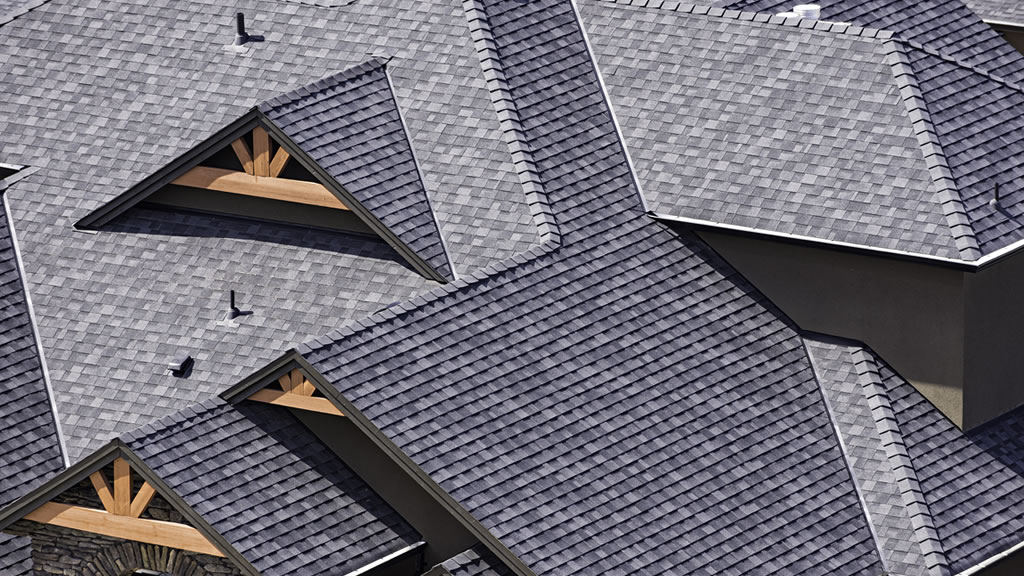High-quality shingles are a roof’s first line of defense against the elements. Not only do they provide a protective barrier, but they also insulate the home and increase its overall value. By learning about the most common types of shingles, you’ll be able to find an effective and affordable way to cover your roof.
Asphalt Shingles
Shingles made of asphalt are some of the most affordable and widely used. Some asphalt shingles also contain fiberglass and organic content, and they’re available in a range of styles, colors, and sizes. Many of these shingles meet Energy Star’s strict standards, which may help you save on utilities.
Though asphalt shingles are a cost-effective option, they’re not right for every application. They don’t do very well in areas with sudden temperature fluctuations; they tend to crack and warp. In more temperate climates, there’s still a chance of serious damage. Another thing to remember about asphalt shingles is that they can only be used on steeply sloped roofs.
Some of the most common asphalt shingle styles and colors include:
- Barkwood
- Weathered wood
- Charcoal
- Slate
When repairing a torn shingle, your contractor will lift it before spreading roofing cement under and on top of it. If a shingle’s corner is curled, it can be fastened down with a roofing nail. Metal flashing is typically used under these shingles to prevent moisture from getting into the roof’s deck.
Fiberglass Shingles
These shingles also contain asphalt, but they’re primarily composed of a fiberglass base and a waterproof layer. Fiberglass shingles are:
- Fire-resistant
- Lightweight
- More cost-effective than some other options
- UV-resistant
- Durable
- Covered under longer warranties
These shingles are made of overlapped wet fiberglass layers bound together by special urea-formaldehyde adhesives. The mat is then coated with a blend of asphalt and mineral fillers for additional moisture resistance.
Organic Shingles
The first organic asphalt shingles were made of recycled cardboard, paper, rags, and wood chips. These shingles were:
- Not as durable as fiberglass shingles
- Heavy
- Inexpensive
Organic shingles are prone to saturation, which can lead to other problems in areas with freezing temperatures and high humidity. These conditions may cause the shingles to degrade prematurely. In most cases, homeowners have elected to replace problematic organic shingles with fiberglass or asphalt alternatives.
Three-Tab and Architectural Shingles
Though they’re inexpensive and thin, three-tab shingles last about 20 to 30 years, just like asphalt shingles. Three-tab shingles are known for the following properties.
- Cutouts that make it look as if three separate shingles were installed
- Low cost compared to architectural shingles
The biggest difference between three-tab and architectural shingles is that the latter option has no cutouts at the bottom. Architectural shingles contain more asphalt, which makes them more flexible than three-tab shingles. Though architectural shingles are highly water-resistant, they don’t work well on low slopes because such roofs are more susceptible to the effects of wind-driven precipitation.
Tile Shingles
If you’re looking for a more stylish roofing option, it’s hard to go wrong with tile shingles. They can be molded in numerous shapes and are typically offered in lighter shades, which helps cool the entire roof. Tile shingles are:
- Usually found on Mediterranean- and Colonial Spanish-style homes
- Attractive and appealing, with a lifespan of up to 80 years
- A higher-cost option
It’s important to keep installation costs in mind when considering tile shingles. They may be too heavy for some roofs, especially those that previously had asphalt shingles. Before installing these shingles, be sure to have the home’s structure evaluated by an experienced roofer.
Wooden Shingles
Falling in between asphalt and tile shingles in terms of total cost, wooden shingles are durable, environmentally friendly, energy-efficient, and can last up to 50 years. A major disadvantage of cedar or redwood shingles is that they are less fire-resistant than other options. Furthermore, the installation process can be complex, and these shingles are vulnerable to the effects of mold growth and termite infestation.
Some of the most common issues associated with wooden shingles are warping, cracking, breaking, and missing pieces. In most cases, it will be necessary to replace wooden shingles rather than repair them. If there’s mildew or mold on a wooden shingle, it can usually be power washed away.
Metal Roofing
If your home has a flat or steep roofline, metal roofing may be a viable option. Made of solid or constructed metal, these roofs are rugged and long-lasting. This type of roofing is affordable when it’s constructed from low-galvanized metals such as aluminum, zinc, copper, or tin.
When it’s properly maintained and regularly inspected, a metal roof can last up to 50 years. Along with the tendency to be noisy during rainstorms, metal roofs also come with the following issues:
- Loose fasteners
- Rust patches and holes
- Moisture intrusion
- Curling at the edges and seams
Despite these minor disadvantages, metal roofing is one of our most popular options. Call today for a no-obligation quote or to schedule a roof inspection.
Slate Shingles
These shingles are one of the most durable options, lasting up to 100 years. Slate’s damage- and water-resistance properties are well known, which makes them an ideal option for homes in colder climates. Available in colors such as red, green, gray, and black, slate roofing is a durable, attractive choice. Consider the following facts before installing slate shingles.
- They can be costly compared to other options.
- They’re expensive to fix, because few companies specialize in them.
- These shingles are very heavy, which means that not all homes can handle their weight.
With slate shingle roofing, the most common roof repairs are tile, flashing, and fastener replacement. It’s best to leave these repairs to the experts, simply because of the weight of the materials and the complexity of the repair process.
Call us today to learn more about the quality roofing materials we offer
No matter which type of roofing you select, it’s important to have the installation done by a professional, reputable local roofing contractor. We stand behind our products and services with long-lasting warranty coverage, and we’ll help you care for and maintain your new roof, so it lasts as long as possible. Contact us online or by phone to schedule a quote or a roof inspection.

